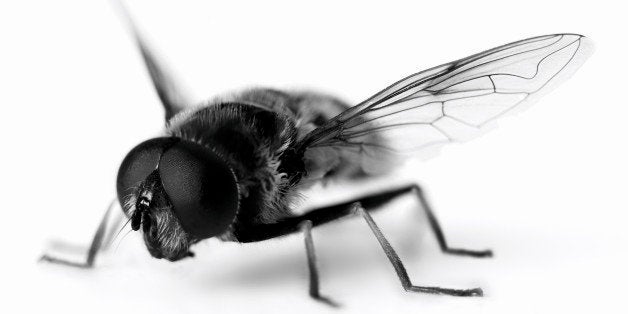
How much is there to learn about the behavior of a fruit fly? Fruit flies have been used in basic research for more than 100 years. Among the more common reasons for studying a fly including small size, homologous disease genes, and genetic tractability, what we are most interested in their ability to withstand stressful conditions significantly better than a mammal. A key feature of fly survival is their ability to survive a slew of environmental conditions from freezing rain to extensive droughts that occur in the fly's natural environment. In humans, short periods of anoxic stress or oxygen deprivation whether caused by stroke or cardiac failure can result in significant brain damage. Flies have evolved mechanisms to protect themselves against anoxic stress. By studying mechanisms that flies use to protect themselves against anoxic stress, we may be able to apply those findings to develop therapies that mitigate the damages from lack of oxygen in humans.
A special technique flies use to survive these conditions involves slowing of their metabolism, which causes the fly to enter into a reversible, neuroprotective coma. Although this coma-state has been studied previously, the limits of insect drowning while examining age, environmental temperature, and drowning duration have now been cohesively linked in a recent paper we published in Nature Scientific Reports. Additionally, an important aspect of our study was examining drowning as a method of anoxic, or zero oxygen, exposure rather than anoxic gas exposure. Anoxic gas exposure is less representative of the type of "zero oxygen" environment flies are naturally exposed to. It is possible that the mechanisms a fly uses to survive drowning are slightly different than mechanisms to survive gas anoxia.
When a fruit fly drowns in a puddle, it can survive for 12 hours and fly away. The surprising discovery we made was that in cold water, at 40 degrees Fahrenheit, a fly can remain in a coma for more than 72 hours. During these three days there is probably a slowing of the metabolism, which is linked to a decrease in cellular energy consumption. In contrast to the fly, the human brain suffers extensive cell death and tissue damage in a matter of minutes with low oxygen.
In addition to temperature, we measured the effect that age plays on the ability to survive long bouts of drowning. One of the interesting facets of this study is that in addition to environmental temperature, age also plays a major role in the survival of the fly after drowning. There are similarities in the way flies and mammals' age. In both systems, certain proteins and molecules are altered, causing increased cell death compared to younger animals. On average, a fruit fly can survive 40-60 days, where in comparison; humans have an average lifespan of 70-90 years. Since fruit flies do in fact age, we used young and old fruit flies in our study as a model for young and older humans.
We saw a dramatic decrease in the survival rate of old flies compared to young flies after drowning. Excitingly, we saw a dramatic increase in the survival rates of older flies that drowned in cold water compared to room temperature, hinting at the fact that lowering an animal's core temperature may reduce age related disease susceptibility. Overall, however, their limit of survival was capped at 48 hours versus young flies at 72 hours.
In the future, we will focus our studies on trying to discover drugs and treatments to narrow the survival gap between young and old flies and potentially translate these findings to mammals and humans. It may seem trivial to focus so much work on a small insect, but at the cellular level, most of the mechanisms in flies are conserved through to humans. One obvious application is the protection of the fly brain. If we can begin to understand the mechanisms involved in the fruit fly's neuroprotective coma, we might have the opportunity to work towards applying these findings to help stroke patients.